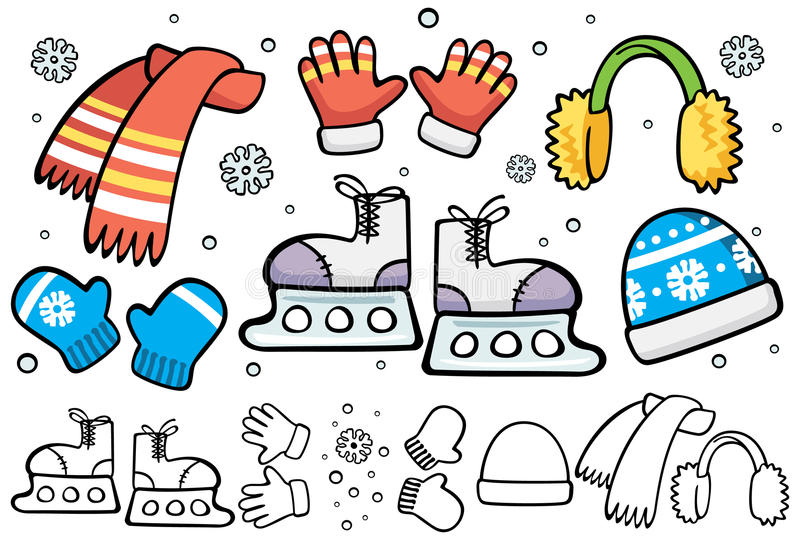Ice skating gear and equipment refer to the clothing, footwear, and protective gear worn by ice skaters. They can vary depending on the type of skating being done, but here are some common items:
Examples of Ice Skating Gear and Equipment
Skates: Ice skates are the most important piece of equipment for ice skating. They are designed with a blade on the bottom to glide over the ice.
Apparel: Ice skating apparel typically consists of tight-fitting, flexible clothing that allows for a full range of motion. Skaters usually wear leggings or tights, a form-fitting top, and a jacket or sweater.
Blade guards: Blade guards are covers that protect the blades of the skates when not in use. They help prevent rust and damage to the blade edges.
Ice skating socks: Thin, snug-fitting socks made of moisture-wicking materials that help prevent blisters and keep the feet dry.
Ice skating tights or leggings: Skaters often wear tights or leggings for warmth and comfort. They are usually made of a stretchy material that allows for freedom of movement.
Warm clothing: Layering is important to keep warm while skating. Clothing should be comfortable, flexible, and warm.
Gloves: Gloves or mittens protect the hands from cold and also provide extra grip on the ice.
Helmet: A helmet is recommended for ice skaters, especially for beginners or those attempting jumps and spins.
Knee and elbow pads: Knee and elbow pads can provide extra protection for skaters learning new moves.
Towel: Skaters often bring a towel to wipe down their skates and dry their hands.

Other examples include:
- Skate bag: A skate bag is a convenient way to carry and store ice skates and other gear. It usually has separate compartments for skates and other accessories.
- Blade sharpener: A blade sharpener is a tool used to sharpen ice skate blades. It’s important to maintain sharp blades for optimal performance.
- Water bottle: Staying hydrated is important during any physical activity, including ice skating.
- Music player: Many figure skaters perform to music, so a music player with headphones is essential for practicing routines.
- Choreography notebook: Figure skaters often keep a notebook with notes on their routines and choreography.
- Spinner: A spinner is a device used to help figure skaters practice spins off-ice.
- Resistance bands: Resistance bands can be used for off-ice training to build strength and flexibility.
- Ankle supports: Ankle supports provide additional support to the ankle joint, which can be important for skaters who are prone to ankle injuries.
- First aid kit: A small first aid kit can be useful in case of minor injuries or accidents.
- Hair ties and accessories: Long hair should be secured back and out of the skater’s face during skating, so hair ties and accessories are useful.
- Baggage lock: If you’re traveling with your ice skates, a baggage lock can help keep your gear secure.
Why ice skating gear and equipment are essential
Ice skating gear and equipment are essential for several reasons:
- Protection: Ice skating involves a lot of movement and the potential for falls. Wearing protective gear like gloves, knee and elbow pads, and helmets can help prevent injuries from impact or collisions.
- Comfort: Ice skating gear like skates and apparel are designed to provide comfort and flexibility while skating. Skates are specially designed to fit snugly and provide support, while ice skating apparel is typically made from breathable and stretchy materials.
- Performance: The right ice skating gear can help skaters perform better. Skates with good blades and a good fit can help skaters move more easily on the ice, while apparel that is well-suited to the sport can help prevent restrictions in movement.
- Maintenance: Properly maintaining ice skating gear, such as using blade guards when not skating and storing skates in a proper skate bag, can help prolong the life of the equipment and save on costs.
Guidelines on how to use ice skating gear and equipment
Here are some general guidelines on how to use ice skating gear and equipment. We’ll take five examples:
Skates: Properly fitting skates are essential for safe and effective ice skating. To use skates, first, ensure that they are laced up securely and tightly but not too tight to cause discomfort. Next, put on the skates and stand up on the ice. Keep your knees slightly bent and your weight centered over your feet. Glide on the ice by pushing off with one foot at a time and maintaining your balance.
Apparel: Ice skating apparel is designed to be comfortable and flexible. Put on leggings or tights, a form-fitting top, and a jacket or sweater. Dress in layers as the rink can be quite cold. Remember to dress appropriately for the type of skating you are doing, whether it be recreational or performance-based.
Gloves: Ice skating gloves are designed to keep your hands warm and improve your grip on the ice. Put on your gloves before putting on your skates. They should fit snugly but not too tight to restrict movement.
Helmet: If you choose to wear a helmet, make sure it fits securely and snugly on your head. Adjust the straps to ensure that it will stay in place in case of a fall.
Knee and elbow pads: Knee and elbow pads should fit comfortably and not restrict movement. Wear them when performing more advanced moves or stunts.
Remember to always follow the instructions for your specific equipment and consult with a professional if you have any questions or concerns.


